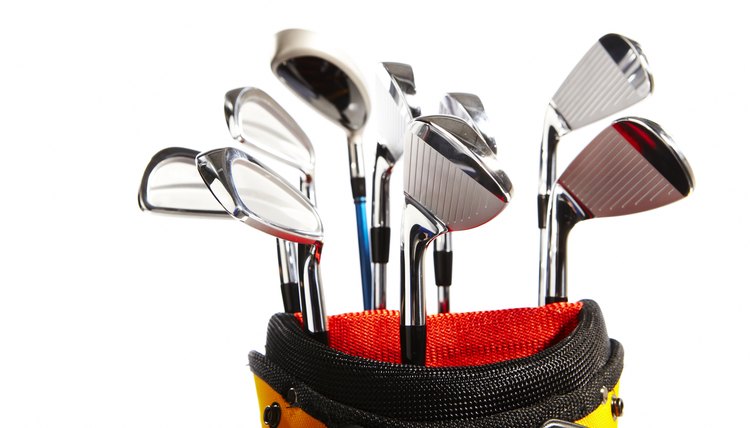Golf is a sport that captivates players of all ages, from seasoned pros to eager youngsters just starting their journey on the greens . As a parent or mentor introducing a child to this timeless game, you might find yourself pondering a crucial question: what is the difference between junior golf clubs and regular ones? This comprehensive guide will unravel the mysteries behind these specialized clubs and help you make informed decisions for your budding golfer.
Key Facts:
1. Junior golf clubs are shorter and lighter than regular clubs, tailored for younger players’ physical attributes.
2. The shaft flexibility of junior clubs is greater, accommodating slower swing speeds.
3. Junior club heads often have larger sweet spots and more forgiveness for developing skills.
4. Regular golf clubs are designed for adult strength and skill levels, with a wider range of customization options.
5. Transitioning from junior to regular clubs typically occurs around age 12-14, depending on the player’s height and strength.
Understanding Junior Golf Clubs: Tailored for Young Talent

A collection of colorful junior golf clubs designed for young players. source
When it comes to nurturing young golf enthusiasts, having the right equipment is paramount . Junior golf clubs aren’t simply scaled-down versions of adult clubs; they’re meticulously engineered to meet the unique needs of younger players . Let’s dive into the key characteristics that set these clubs apart.
Size and Length: A Perfect Fit for Small Hands
The most obvious distinction between junior golf clubs and regular ones is their size . Junior clubs are significantly shorter, allowing young golfers to maintain proper form and control throughout their swing . This tailored length is crucial for developing correct muscle memory and technique from the get-go.
The Impact of Proper Sizing
| Age Group | Typical Club Length | Benefits |
|---|---|---|
| 3-5 years | 26-29 inches | Easier control, builds confidence |
| 6-8 years | 30-33 inches | Promotes proper swing mechanics |
| 9-11 years | 34-37 inches | Prepares for transition to adult clubs |
By using clubs that fit their height and arm length, junior golfers can:
– Develop a more natural swing path
– Achieve better ball contact
– Reduce the risk of bad habits forming due to overcompensation
Weight: Lightweight Champions
Junior golf clubs are substantially lighter than their adult counterparts . This reduced weight is a game-changer for young players, allowing them to:
- Swing with greater ease and control
- Maintain proper form throughout their round
- Reduce fatigue, enabling longer practice sessions
The lightweight design isn’t just about the club head; it extends to the shaft and grip as well . This holistic approach ensures that every aspect of the club is optimized for a junior golfer’s physique and capabilities.
Flexibility: Bending the Rules for Success
One of the most crucial differences between junior golf clubs and regular ones lies in the shaft flexibility . Junior clubs boast more flexible shafts, which is essential for accommodating the slower swing speeds typical of younger players . This increased flexibility offers several advantages:
- Enhanced ball flight: The extra flex helps launch the ball higher, compensating for lower swing speeds.
- Improved distance: By maximizing energy transfer, flexible shafts help juniors achieve greater distances.
- Boosted confidence: Seeing the ball soar can be a huge motivator for young golfers!
Clubhead Design: Forgiveness is Key
When it comes to clubhead design, junior golf clubs prioritize forgiveness above all else . This focus on forgiveness manifests in several ways:
- Larger sweet spots: A more expansive hitting area increases the chances of solid contact, even with off-center hits.
- Higher lofts: Increased loft angles help get the ball airborne more easily, a common challenge for beginners.
- Perimeter weighting: This design feature enhances stability and reduces the effects of mis-hits.
These design elements combine to create a more enjoyable and rewarding experience for junior golfers, keeping them motivated to improve their skills.
Regular Golf Clubs: Designed for Adult Power and Precision

A visual comparison of a junior golf club (left) and a regular golf club (right). source
Now that we’ve explored the unique features of junior clubs, let’s turn our attention to regular golf clubs and how they differ . These clubs are engineered for adult players with more developed physiques and refined techniques .
Size and Length: Full-Scale Performance
Regular golf clubs are significantly longer than junior clubs, designed to match the height and arm length of adult players . This increased length allows for:
- Greater swing arc: Resulting in higher clubhead speeds and increased distance.
- Optimized leverage: Enabling players to generate more power throughout their swing.
- Versatility: Accommodating a wider range of playing styles and techniques.
Weight: Harnessing Momentum
One of the most noticeable differences when comparing junior golf clubs and regular ones is the weight . Adult clubs are substantially heavier, which may seem counterintuitive at first . However, this added weight serves several important purposes:
- Increased stability: The extra mass helps maintain the club’s path throughout the swing.
- Enhanced feel: Heavier clubs provide more feedback, allowing experienced players to fine-tune their shots.
- Improved distance: When paired with proper technique, the additional weight can translate to longer drives and approach shots.
Flexibility: Finding the Right Balance
Unlike junior clubs, regular golf clubs offer a range of shaft flexibilities to suit different swing speeds and player preferences . The options typically include:
- Extra Stiff (X)
- Stiff (S)
- Regular (R)
- Senior (A)
- Ladies (L)
Choosing the right flex is crucial for optimizing performance and can have a significant impact on accuracy, distance, and overall consistency . Professional club fitting can help players find the perfect match for their swing characteristics.
Clubhead Design: Precision and Power
Regular golf clubs feature more advanced clubhead designs, focusing on:
- Aerodynamics: Reducing drag for increased swing speeds.
- Weight distribution: Allowing for shot shaping and trajectory control.
- Material technology: Utilizing cutting-edge materials for improved performance and durability.
While forgiveness is still a factor, especially in game-improvement clubs, regular golf clubs generally require more precise ball striking to achieve optimal results.
Performance Differences: Junior vs. Regular Golf Clubs
Understanding the performance implications of these design differences is crucial for both young golfers and their mentors . Let’s break down how junior and regular golf clubs stack up in key areas:
Swing Speed: Finding the Sweet Spot
| Club Type | Typical Swing Speed | Impact on Performance |
|---|---|---|
| Junior | 60-75 mph | Easier to generate club head speed, promotes proper technique |
| Regular | 80-95 mph (average male golfer) | Requires more strength, rewards proper mechanics |
Junior clubs are designed to work with slower swing speeds, helping young players achieve satisfying results while developing their skills . Regular clubs, on the other hand, are optimized for the higher swing speeds of adult players.
Control and Accuracy: A Balancing Act
When it comes to control and accuracy, junior and regular golf clubs offer different advantages:
- Junior Clubs:
- More forgiving on off-center hits
- Easier to manipulate due to lighter weight
- Promote confidence through consistent ball flight
- Regular Clubs:
- Offer greater precision for skilled players
- Allow for more shot-shaping capabilities
- Provide better feedback on swing quality
For young golfers, the increased control offered by junior clubs can be a major confidence booster , encouraging them to experiment and improve their skills without becoming discouraged by frequent mis-hits.
Set Composition: Building the Perfect Arsenal
The composition of junior and regular golf sets can vary significantly, reflecting the different needs and skill levels of their intended users.
Typical Junior Golf Sets
Junior golf sets are often streamlined to include the essential clubs needed for learning and enjoyment . A typical junior set might include:
- Driver (with higher loft)
- Fairway wood
- Hybrid
- 7-iron
- 9-iron
- Pitching wedge
- Putter
This simplified set allows young golfers to focus on mastering the fundamentals without being overwhelmed by too many club choices . Some brands offer progressive sets that grow with the child, adding more clubs as their skills develop.
Comprehensive Regular Golf Sets
Regular golf sets are more extensive, catering to the diverse situations encountered during a round . A full set typically includes:
- Driver
- 3-wood and 5-wood
- 4-hybrid (or 3-iron)
- 4-iron through 9-iron
- Pitching wedge
- Gap wedge
- Sand wedge
- Lob wedge
- Putter
This wider range of clubs allows adult players to tackle any challenge the course might present, from long drives to delicate chip shots around the green.
Transitioning from Junior to Regular Clubs: Timing is Everything

A young golfer with a junior golf bag, ready for the transition to regular clubs. source
One of the most common questions parents and young golfers face is when to make the switch from junior to regular golf clubs . While there’s no one-size-fits-all answer, several factors can help guide this decision:
Age and Physical Development
Typically, the transition occurs between the ages of 12 and 14 . However, physical development is a more reliable indicator than age alone . Key milestones to consider include:
- Height: When a junior reaches about 5’0″ (152 cm), they may be ready to explore regular clubs.
- Strength: The ability to generate higher swing speeds is crucial for effectively using adult clubs.
- Technique: A solid grasp of fundamental swing mechanics is essential before moving to regular clubs.
Custom Fitting: Bridging the Gap
For older juniors approaching adult size, custom fitting can be an invaluable tool in making a smooth transition . A professional fitting can help identify the right mix of club length, weight, and flex to match a young golfer’s developing skills and physique.
Custom fitting offers several advantages:
– Ensures proper club length as the player grows
– Allows for gradual increases in club weight and stiffness
– Provides opportunities to test different club configurations
By taking a personalized approach, custom fitting can help young golfers maintain their progress and enjoyment of the game throughout the transition period.
Cost Considerations: Investing in the Future
When comparing junior golf clubs and regular ones, cost is an important factor to consider . Let’s break down the financial aspects of both options:
Junior Golf Clubs: Growing with Your Young Golfer
Junior golf clubs generally come with a lower price tag than their adult counterparts . This more affordable entry point offers several benefits:
- Reduced initial investment: Perfect for families unsure of their child’s long-term interest in golf.
- Flexibility for growth: Many brands offer trade-in programs, allowing parents to upgrade to larger sets as their children grow.
- Focus on essentials: Junior sets typically include only the most necessary clubs, keeping costs down.
However, it’s important to note that rapidly growing children may outgrow their clubs relatively quickly, potentially leading to more frequent replacements.
Regular Golf Clubs: A Long-Term Investment
Regular golf clubs, particularly those with advanced technology and materials, tend to be more expensive . While the upfront cost is higher, there are some long-term advantages to consider:
- Durability: Adult clubs are built to withstand more powerful swings and last for many years.
- Resale value: Quality adult clubs often retain some value, allowing for upgrades or changes in the future.
- Performance benefits: The advanced technology in regular clubs can lead to improved play, potentially saving money on lessons or practice time.
For committed golfers, investing in a quality set of regular clubs can pay dividends in terms of performance and longevity.
FAQs About what is the difference between junior golf clubs and regular:
Q: What age should juniors switch to regular clubs?
A: Juniors typically switch to regular clubs between ages 12-14, depending on their height (around 5’0″ or 152 cm) and physical development. However, individual factors like strength and swing speed should also be considered when making this transition.
Q: Can petite adults use junior golf clubs?
A: Yes, petite adults can use junior golf clubs if they find them more comfortable and suitable for their stature. However, it’s recommended to consult with a professional club fitter to ensure the clubs match their swing characteristics and provide optimal performance.
Q: What brands offer the best junior golf clubs?
A: Several reputable brands offer high-quality junior golf clubs, including U.S. Kids Golf, Callaway, TaylorMade, and PING. The best brand depends on the individual needs of the young golfer, so it’s advisable to try different options before making a decision.
Q: How to determine the right size for junior golf clubs?
A: To determine the right size for junior golf clubs, consider the child’s height, arm length, and strength. Many manufacturers provide sizing charts based on height. For a more precise fit, consider getting a professional fitting or using a junior club fitting guide.
Q: Are custom fittings necessary for junior golf clubs?
A: While not always necessary, custom fittings can be beneficial for junior golfers, especially as they approach the transition to regular clubs. Custom fittings ensure that the clubs match the young player’s physical characteristics and swing style, potentially improving performance and enjoyment of the game.
Q: What is the cost difference between junior and regular golf clubs?
A: Junior golf clubs are generally less expensive than regular golf clubs, with complete junior sets often ranging from $150 to $500. Regular golf club sets can cost anywhere from $500 to several thousand dollars, depending on the brand and technology included.
Summary:
The key difference between junior golf clubs and regular ones lies in their design, tailored to meet the unique needs of young players versus adults . Junior clubs are shorter, lighter, more flexible, and offer greater forgiveness, while regular clubs are longer, heavier, and designed for higher swing speeds and more precise shot-making . This distinction is crucial for ensuring that golfers of all ages can enjoy and excel in the sport.
As we’ve explored the nuances of junior and regular golf clubs, it’s clear that choosing the right equipment is vital for a golfer’s development and enjoyment of the game . Whether you’re a parent introducing your child to golf or an adult looking to improve your own game, understanding these differences can help you make informed decisions about your equipment . So, are you ready to hit the links with the perfect set of clubs? The greens are calling, and adventure awaits!—





